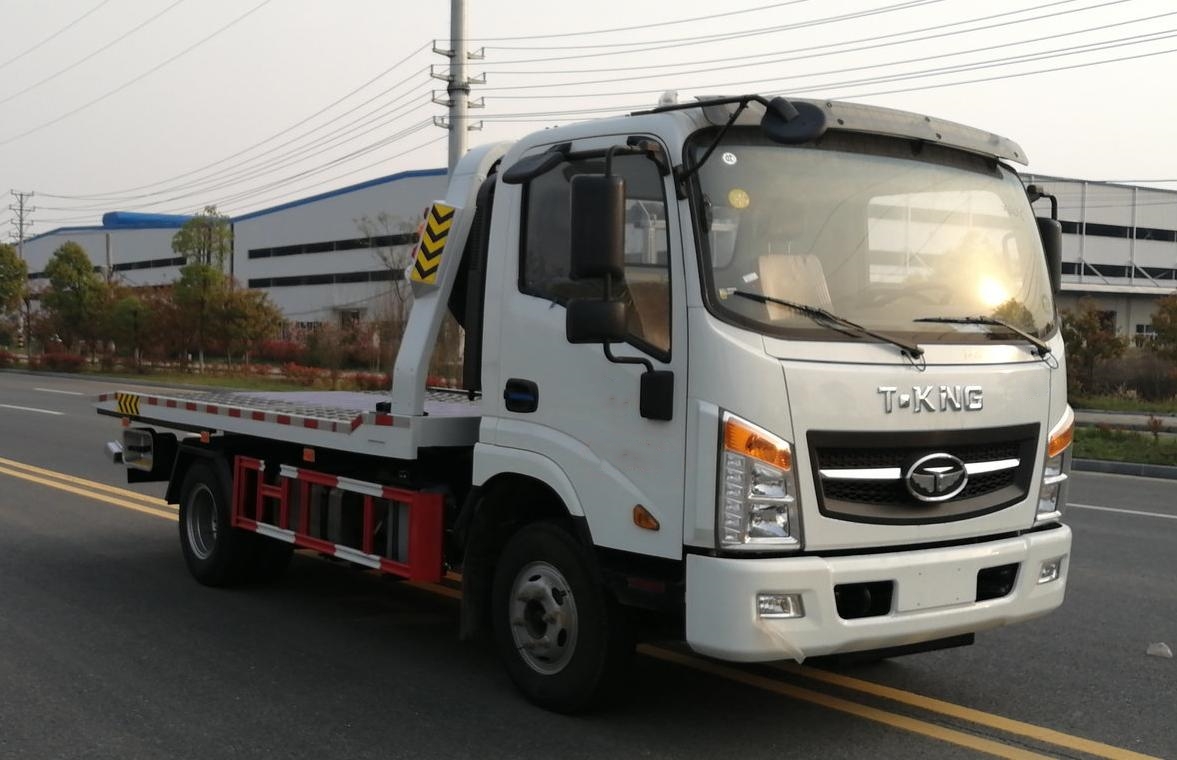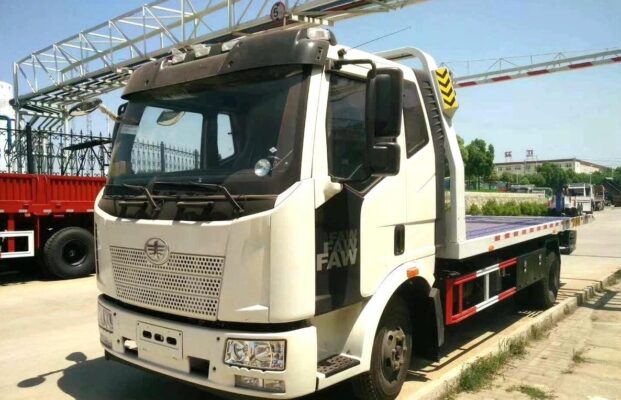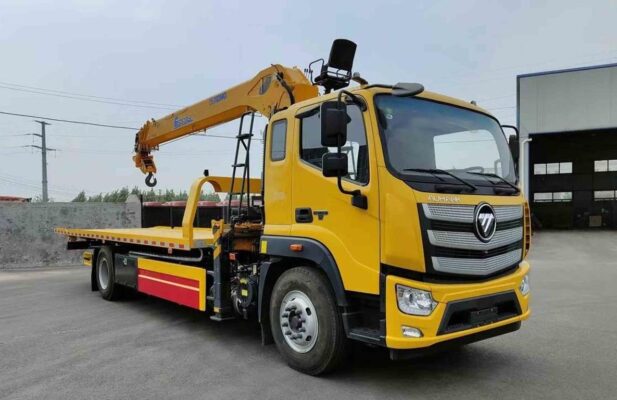Շինարարության ոլորտում, fuel consumption of truck cranes constitutes a significant portion of operational costs. Effective fuel management not only reduces expenses but also contributes to environmental sustainability. Here are seven essential tips for optimizing fuel usage in truck craneս, ensuring that your operations remain efficient and cost-effective.
1. Choose Appropriate Fuel
Selecting the right fuel is the first step in ensuring optimal performance and fuel efficiency. When operating in colder climates, it’s essential to choose fuel with a pour point lower than the lowest expected temperature in the construction area by at least 3-5°C. Using appropriate fuel prevents issues like fuel thickening or gelling, which can impair engine performance and increase consumption. Լրացուցիչ, ensure that the fuel quality meets the manufacturer’s specifications to avoid any operational inefficiencies that may arise from inferior fuel.
2. Reduce the Vehicle’s Weight
The weight of a truck crane directly affects its fuel consumption. The heavier the vehicle, the more energy it requires to move, leading to higher fuel usage. To mitigate this, minimize the self-weight of the crane by removing unnecessary additional equipment and components that are not essential for the specific construction task at hand. This weight reduction can lead to a significant decrease in fuel consumption without compromising the quality or safety of the project. Օրինակ, removing extra attachments or tools that are not needed for immediate operations can make a noticeable difference in overall weight and, հետևաբար, fuel efficiency.
3. Minimize Resistance While Driving
Driving efficiency can be greatly affected by various forms of resistance. Two main types of resistance that contribute to fuel consumption are rolling resistance and acceleration resistance. While air resistance is a concern at higher speeds (over 400 km/h), it can typically be ignored at lower speeds. Այնուամենայնիվ, rolling resistance becomes increasingly important, especially when driving on uneven surfaces. Uneven or rough terrain can cause the vehicle to bounce, increasing rolling resistance by 30-50% compared to smooth surfaces. Հետեւաբար, maintaining good construction roads is vital for minimizing fuel consumption.
Tire pressure is another critical factor that influences rolling resistance. On hard surfaces, low tire pressure can cause increased deformation, resulting in higher rolling resistance. Conversely, on softer surfaces, lower pressure increases the contact area, thus reducing the unit pressure and rolling resistance. Regularly monitoring and adjusting tire pressure according to road conditions can lead to improved fuel efficiency. Լրացուցիչ, choosing a lower gear ratio when driving at higher speeds can further optimize fuel usage.
4. Increase Engine Compression Ratio to Standard Value
Optimizing the engine’s compression ratio is an effective way to enhance fuel efficiency. For diesel engines, the compression ratio typically ranges from 16 դեպի 22. Increasing this ratio elevates the temperature and pressure during the compression phase, which promotes more effective combustion and expansion of the fuel-air mixture. This enhancement leads to improved thermal efficiency, resulting in greater power output and reduced fuel consumption.
Դրան հասնելու համար, ensure that the intake system is functioning optimally. Regular cleaning and maintenance of filters are essential to guarantee sufficient airflow into the cylinders. Diesel engines should maintain a cylinder pressure of no less than 20% of the original standard pressure, while gasoline engines should not fall below 30%. Monitoring the pressure differences between cylinders is also crucial; for diesel engines, this should not exceed 8%, and for gasoline engines, it should not exceed 10%. If these pressures are not within specifications, corrective actions such as valve grinding, piston ring replacement, or removal of carbon deposits may be necessary. Լրացուցիչ, ensuring that intake and exhaust valve clearances are adjusted to specified values can prevent increased fuel consumption.
5. Calibrate the Fuel Injection Timing
Fuel injection timing is a critical factor that affects engine performance and fuel consumption. If the fuel injection occurs too early or too late, it can lead to inefficient combustion and increased fuel consumption. Հետեւաբար, it is essential to calibrate the fuel injection timing to ensure optimal engine performance. Regular checks and adjustments can help maintain the engine’s efficiency and reduce unnecessary fuel expenditure.
6. Reduce Fuel Consumption per Unit Load
Another effective strategy for improving fuel efficiency is to maximize the load capacity of the truck crane. When vehicle conditions allow, operating at or near the rated capacity can enhance productivity and significantly lower fuel consumption per unit load. Carrying heavier loads can result in better fuel economy, as the energy expended per ton decreases with increased payload. Այնուամենայնիվ, it is crucial to ensure that the crane operates within its safety limits to prevent potential overloads or mechanical failures.
7. Master Economic Speed
Understanding the relationship between speed, անվտանգություն, and fuel consumption is vital for effective truck crane operation. In construction environments where roads are often informal and uneven, identifying an optimal speed range can lead to significant fuel savings. Օրինակ, a semi-loaded T815 truck typically achieves its lowest fuel consumption at speeds between 25-30 km/h. Operating within this range not only optimizes fuel efficiency but also balances safety and operational effectiveness.
8. Choose the Right Lubricating Oil
The choice of lubricating oil plays a pivotal role in reducing fuel consumption and enhancing engine efficiency. Using the correct lubricating oil reduces friction between moving parts, which can significantly affect power output and fuel consumption. It is essential to select lubricating oil that meets the specifications recommended by the engine manufacturer and to consider seasonal variations. Different grades of oil should be utilized for winter and summer conditions to ensure optimal performance throughout the year. Regular oil changes and maintenance can also help maintain engine performance, contributing to overall fuel savings.
9. Implement Regular Maintenance Practices
Establishing a routine maintenance schedule is critical for ensuring the long-term efficiency and performance of truck craneս. Regular inspections should include checking the condition of tires, brakes, and suspension systems, as well as monitoring engine health through diagnostics. Keeping all components in good working order not only enhances safety but also ensures that the crane operates efficiently, further reducing fuel consumption.
Եզրակացություն
Implementing these seven tips can lead to significant fuel savings and enhanced efficiency in truck crane operations. By focusing on weight reduction, resistance minimization, engine optimization, and regular maintenance, operators can improve fuel efficiency, reduce operational costs, and promote sustainability in the construction industry. Emphasizing the importance of selecting the right fuel, lubricating oils, and maintaining optimal operating conditions can help ensure that truck cranes perform at their best while keeping fuel consumption in check.













